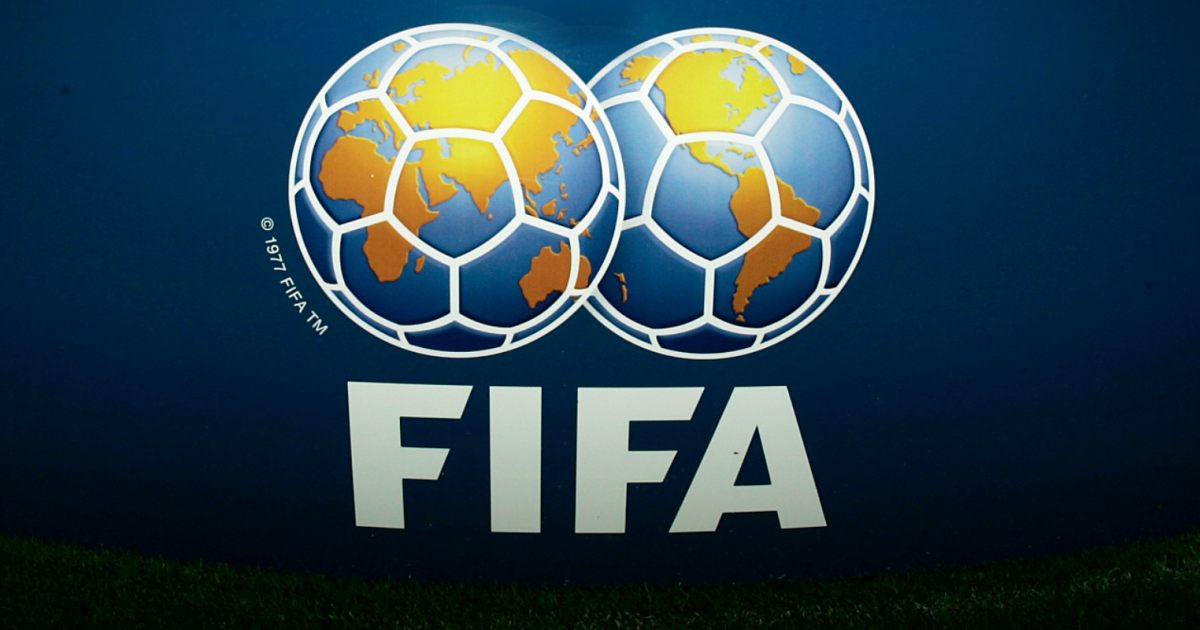What Is the Biggest Sport in the World?: In a world where competition rises above borders and societies, the address of which don rules incomparable flashes energetic talks about among fans and competitors alike.
From the zapping vitality of pressed stadiums to the binding together soul of universal competitions, sports play a urgent part in forming our worldwide scene.
But what really characterizes the “greatest” sport? Is it the number of fans, the scale of viewership, or the profundity of social affect? This investigation digs into the contenders for the title, highlighting the components that elevate one sport over the rest and analyzing the significant impact sports have on our social orders.
Connect us as we reveal the flow that make a wear not fair prevalent, but a genuine wonder.
Key Takeaways
- Worldwide Reach: Soccer (football) is in many cases viewed as the greatest game because of its boundless prevalence across landmasses, with billions of fans and significant occasions like the FIFA World Cup drawing huge viewership.
- Different Measurements: The title of the “greatest” game can shift in view of models, for example, fan base size, TV evaluations, cooperation rates, and social importance.
- Arising Competitors: Different games like ball, cricket, and tennis have huge followings and are quickly filling in prevalence, particularly in locales like Asia and North America.
- Media Impact: The ascent of advanced streaming and virtual entertainment has enhanced the span of different games, making it more straightforward for fans to connect with and for less popular games to get some decent momentum.
- Social Effect: Sports frequently reflect and impact cultural qualities, filling in as a bringing together power in networks and nations, with their importance stretching out past simple diversion.
- Future Patterns: As globalization proceeds, the ubiquity of various games might move, with arising sports possibly testing the customary monsters in the years to come.
What Is the Biggest Sport in the World?
Overview of Sports Popularity Around the World
Sports fame shifts fundamentally all over the planet, affected by social, monetary, and social variables. Soccer (football) rules universally, bragging billions fans and significant competitions like the FIFA World Cup. Ball and cricket additionally have significant followings, especially in the Americas and South Asia, separately.
Different games, like tennis and rugby, appreciate provincial fame. Media inclusion and innovative progressions have additionally enhanced fan commitment, while arising sports are building up some forward movement, reshaping the scene of worldwide games.
In general, the notoriety of sports reflects both neighborhood customs and worldwide patterns.
Most Popular Sports Ranked By Total Fans
| Rank | Sport | Estimated Fans (in billions) |
|---|---|---|
| 1 | Soccer (Football) | 4.0 |
| 2 | Cricket | 2.5 |
| 3 | Basketball | 2.4 |
| 4 | Field Hockey | 2.0 |
| 5 | Tennis | 1.0 |
| 6 | Volleyball | 0.9 |
| 7 | Table Tennis | 0.875 |
| 8 | Baseball | 0.5 |
| 9 | American Football | 0.4 |
| 10 | Golf | 0.4 |
Defining the “Biggest” Sport
Characterizing the “greatest” sport includes considering different factors, for example, worldwide fan base, TV viewership, investment rates, and social effect.
While soccer (football) frequently beat the rundown because of its broad reach and enormous following, different games might succeed in unambiguous districts or socioeconomics. At last, the definition can differ in view of the standards used to quantify ubiquity.
Football (Soccer): The Global Juggernaut
Football (soccer) remains as the worldwide juggernaut of sports, spellbinding billions with its invigorating play and rich history. Known for its all inclusive allure, the game rises above social and geographic limits, joining fans from assorted foundations.
Significant occasions like the FIFA World Cup and UEFA Champions Association feature the game’s power and expertise, drawing enormous worldwide crowds. The straightforwardness of the game, requiring insignificant gear and space, adds to its far and wide prominence.
With energetic fanbases and famous clubs, football keeps on overwhelming the games scene, cementing its status as the world’s greatest game.
What is the Most Popular Sport in the World?
The most famous game on the planet is soccer (football). With an expected 4 billion fans universally, it outperforms any remaining games regarding fame.
Significant competitions like the FIFA World Cup and homegrown associations, for example, the English Head Association draw in monstrous viewership and cooperation. The game’s openness, rich history, and social importance add to its status as a general #1, making it the prevailing power in the worldwide games field.
What is the Greatest Sport of All Time?
Deciding the best game ever is abstract and frequently ignites vivacious discussion. Many contend that soccer (football) holds this title because of its worldwide reach, tremendous fanbase, and social effect.
Others could highlight sports like ball for its speedy energy and impact on youth culture, or cricket for its rich history and committed continuing in nations like India and Australia.
Eventually, the “best” sport differs in light of individual inclinations, provincial importance, and the measurements utilized for assessment, like cooperation, viewership, or authentic accomplishments.
Which Sport is Most Watched?
The most watched sport on the planet is soccer (football), especially during significant occasions like the FIFA World Cup, which draws in billions of watchers universally.
Other exceptionally watched sports remember the Super Bowl for American football, the UEFA Champions Association in soccer, and the Olympics, which highlight a wide cluster of sports and draw monstrous worldwide crowds.
The ubiquity of these occasions features the worldwide allure of soccer, close by the critical viewership of American football and multi-sport rivalries.
What is the Favorite Sport?
The most loved game can fluctuate generally contingent upon social, local, and individual inclinations. Notwithstanding, soccer (football) is much of the time refered to as the most preferred sport worldwide, with billions of fans energetically supporting their groups.
In the US, American football, especially the NFL, holds a critical spot in mainstream society. Ball likewise appreciates monstrous prevalence, particularly among more youthful socioeconomics. Eventually, most loved sports reflect nearby practices and individual interests, making the response exceptionally abstract.
What is the Top 1 Sport Game in the World?

What is the Top 1 Sport Game in the World?
The top game on the planet is generally viewed as soccer (football). Its general allure, with an expected 4 billion fans, and significant occasions like the FIFA World Cup and UEFA Champions Association feature its noticeable quality.
Soccer’s straightforwardness, worldwide associations, and well established social importance add to its situation as the main game, drawing in enthusiastic supporters and members across each landmass.
The Rise of Soccer (Football)
The ascent of soccer (football) can be followed back to its starting points in the nineteenth hundred years, developing into a universally cherished sport. Its global allure flooded with the foundation of FIFA in 1904 and the primary World Cup in 1930, exhibiting the game on a great stage.
The game’s availability, requiring negligible gear, permitted it to flourish in different societies. Significant associations, similar to the English Chief Association and La Liga, have additionally promoted the game through headliners and exciting matches.
Today, soccer’s worldwide fanbase keeps on extending, driven by media inclusion, youth commitment, and the binding together force of the game, making it the most famous game around the world.
Comparing Other Popular Sports
While contrasting other well known sports, a few elements become an integral factor, including fan base, social importance, and provincial prevalence.
- B-ball: With an expected 2.4 billion fans, ball has major areas of strength for an in the U.S., China, and Europe. The NBA’s worldwide reach and the game’s speedy nature make it unquestionably engaging.
- Cricket: Around 2.5 billion fans fundamentally in South Asia, Australia, and the UK feature cricket’s importance. Significant competitions like the ICC World Cup draw gigantic crowds, especially in India.
- Tennis: Flaunting around 1 billion fans, tennis has a worldwide following, especially during Huge homerun occasions. Its singular nature and headliners add to its prominence.
- Field Hockey: With around 2 billion fans, field hockey is particularly famous in nations like India and Pakistan. It joins components of cooperation and methodology.
- American Football: Roughly 400 million fans, basically in the U.S., make American football a social staple, with the Super Bowl as a feature occasion.
- Baseball: With around 500 million fans, baseball has a rich history in the U.S. what’s more, huge followings in Japan and Latin America.
Each game has its extraordinary attributes, verifiable importance, and devoted fanbase, adding to the rich woven artwork of worldwide games culture.
The Impact of Media and Technology
The effect of media and innovation on sports has been extraordinary, reshaping the way that fans draw in with their number one games.
- Expanded Openness: Broadcasting freedoms and streaming stages have made sports more available than any other time in recent memory. Fans can now watch games live from anyplace on the planet, prompting a bigger worldwide crowd.
- Web-based Entertainment Commitment: Stages like Twitter, Instagram, and TikTok permit competitors and groups to interface straightforwardly with fans, encouraging a feeling of local area and expanding fan faithfulness.
- Information Investigation: High level measurements and examination have changed how groups plan and how fans figure out the game. Bits of knowledge into player execution and game strategies improve the survey insight.
- Virtual and Expanded Reality: Arising advances offer vivid encounters, permitting fans to draw in with sports in new ways, for example, virtual arena visits or expanded reality highlights during communicates.
- E-sports Development: The ascent of e-sports has made another aspect in sports viewership, drawing in large number of fans and obscuring the lines between conventional games and serious gaming.
Generally speaking, media and innovation have extended the compass of sports as well as improved the experience for fans, making it more intuitive and locking in.
Cultural Significance of Sports
The social meaning of sports reaches out a long ways past simple diversion, assuming a crucial part in forming personalities, cultivating local area, and reflecting cultural qualities.
- Solidarity and Character: Sports frequently act as a bringing together power, uniting individuals paying little mind to foundation. Public groups can summon overwhelming inclinations of pride and fortitude during worldwide contests.
- Social Articulation: Various games can reflect neighborhood customs and customs, exhibiting novel styles and stories. For instance, cricket in India is entwined with the country’s set of experiences and character.
- Social Issues: Sports can feature and challenge social issues, like racial imbalance and orientation separation. Competitors frequently utilize their foundation to advocate for change, affecting public talk.
- Financial Effect: Major games can drive monetary development, helping nearby economies through the travel industry, work creation, and framework improvement.
- Youth Improvement: Cooperation in sports advances collaboration, discipline, and administration abilities among youngsters, adding to self-awareness and local area commitment.
By and large, sports assume a huge part in social character, social change, and local area constructing, reflecting and forming the upsides of society.
Future Trends in Sports Popularity
Future patterns in sports ubiquity are probably going to be molded by a few key variables:
- E-sports Development: With the fast development of e-sports, cutthroat gaming is supposed to draw in a more youthful segment, possibly matching conventional games in viewership and cooperation.
- Expanded Variety: As worldwide socioeconomics shift, sports that embrace inclusivity and variety are probably going to acquire ubiquity, prompting a more extensive fan base and interest.
- Innovation Joining: Progressions in virtual and expanded reality will improve fan encounters, making sports more intuitive and vivid, possibly attracting new crowds.
- Wellbeing and Health Concentration: As society puts more prominent accentuation on wellbeing, sports that advance wellness and prosperity, like running, cycling, and yoga, may see expanded prevalence.
- Supportability Drives: Sports associations zeroing in on natural maintainability and social obligation might draw in fans who focus on these qualities.
- Globalization of Sports: Conventional games will keep on venturing into new business sectors, especially in Asia and Africa, prompting an ascent in nearby associations and worldwide rivalries.
These patterns demonstrate a powerful future for sports, driven by innovative headways, social moves, and changing customer inclinations.
What is the biggest sport in the world?
| Aspect | Details |
|---|---|
| Sport | Soccer (Football) |
| Estimated Fans | 4 billion |
| Governing Body | FIFA (Fédération Internationale de Football Association) |
| Major Tournaments | FIFA World Cup, UEFA Champions League |
| Most Popular Leagues | English Premier League, La Liga, Bundesliga |
| Key Regions | Global (especially Europe, South America, Africa, and Asia) |
| Cultural Impact | Unites diverse communities, national pride, and local identity |
| Accessibility | Minimal equipment required, played worldwide |
| Media Coverage | Extensive global broadcasting and streaming |
FAQ’S About What is the biggest sport in the world?
What sport has the largest fanbase globally?
Soccer (football) holds the title for the biggest worldwide fanbase, with roughly 4 billion fans all over the planet.
What factors contribute to soccer’s popularity?
Soccer’s fame is driven by its effortlessness, availability, significant global competitions like the FIFA World Cup, and its capacity to join assorted societies.
How does soccer compare to other popular sports?
While soccer leads in worldwide fanbase, different games like cricket and ball additionally have critical followings, especially in unambiguous locales, yet none match soccer’s overall reach.
What role do media and technology play in soccer’s popularity?
Media inclusion, web-based features, and online entertainment commitment have decisively expanded soccer’s perceivability, permitting fans to associate with the game whenever and anyplace.
Is soccer expected to maintain its status as the biggest sport?
Given its well established social importance and continuous worldwide extension, soccer is probably going to keep up with its status as the greatest game for years to come.
Conclusion
In conclusion, soccer (football) remains as the greatest game on the planet, enthralling billions with its rich history, unmatched worldwide reach, and social importance.
Its capacity to join different networks, combined with the fervor of significant competitions and associations, guarantees that soccer stays a strong power in the domain of sports.
As it keeps on developing with headways in innovation and media, the game’s impact and fame are ready to develop significantly further, cementing its status as a definitive worldwide peculiarity.














Leave a Reply